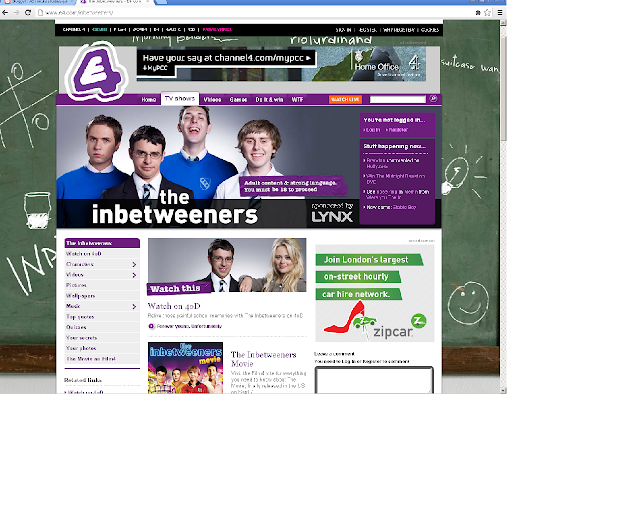Narrative theories within Beaver Falls (episode 1)
Todorov
Equilibrium: The main characters appear to embarking on a seemingly carefree holiday, where they will visit America, and, whilst have to supervise children, they are under the impression that they will want little to do with them.
Disruption:The Trio arrive at the camp and soon realize that they will have to look after a group of socially inept and dependent children.
Recognition of disruption: The children show hostility towards the trio, and the characters learn that they have gained access to the country based on a poor lie, that the character of Flynn told in order to ensure their placement in the camp.
Attempt to repair: The characters save the children from being harassed by a group of ‘jocks’ by standing up for them and presenting themselves as strong leaders.
New/return to equilibrium: The main characters and the children establish an understanding, reconcile their differences, and agree to help one another.

Propp
Hero: Adil
Villain: Jake
Donor: Flynn (gives the characters opportunity to be in this situation)
Helper: Barry
Princess:
(Barry): Kimberly
(Adil): Rachel
(Flynn): the promise of being at the camp
False hero: Flynn (reveal lied to fellows)

Barthes
Action: In presenting the main characters interactions of a flirtatious and friendly manner with other female characters in the show, the probability that more serious relationships will be pursued and possibly obtained by the characters, is very strong, and becomes expectant from the audience.
Enigma: Enigma presented by Flynn’s strange behaviour receiving phone calls and not answering them, and hesitating when sending a text to his mother. The enigma is not solved at the end of the episode, but remains as a recurring element throughout the series. An enigma is also presented early on with Adil, as it is hinted that he has had some kind of failed relationship, but this is kept mysterious. This is confirmed later on in the episode.
Semic: The signs used within the set,( like sunshine, a perfect lake, set in America) and cast members (mostly young attractive people), are used to convey the (perfectionist) image of the ‘American dream,’ something considered to be very desirable. This causes the product to be more appealing and enticing, as it gives the viewers the sense that they are experiencing the ‘American dream.’
Symbolic: Conflict is expressed through Barry’s attempt to seduce Kimberly, whilst his plans are thwarted due to her already being in a relationship. Furthermore, conflict is shown against the juxtapositions of the group of children presented to be the side of ‘good’, (all of whom are physically unfit and socially inept), against those who are presented as 'bad', (all of whom are shown as very confident and athletic).
Cultural: Cultural stereotypes are reinforced by the juxtaposition of the groups of children within the show. One group who are physically unfit and do not fit into any particular social group, reinforce the stereotype that these traits make them ‘uncool’ or ‘unpopular.’ Whereas their opposition whom are athletic and confident, enforce the stereotype seen in many American set or made TV shows that these traits make them ‘popular’ or ‘cool’



























